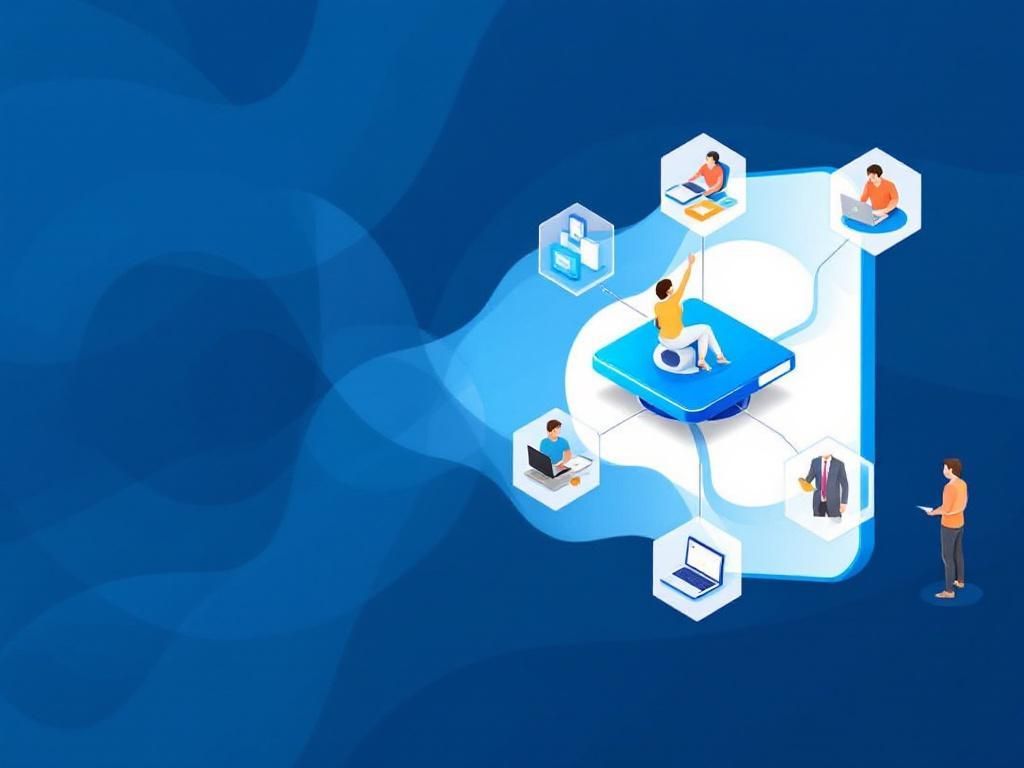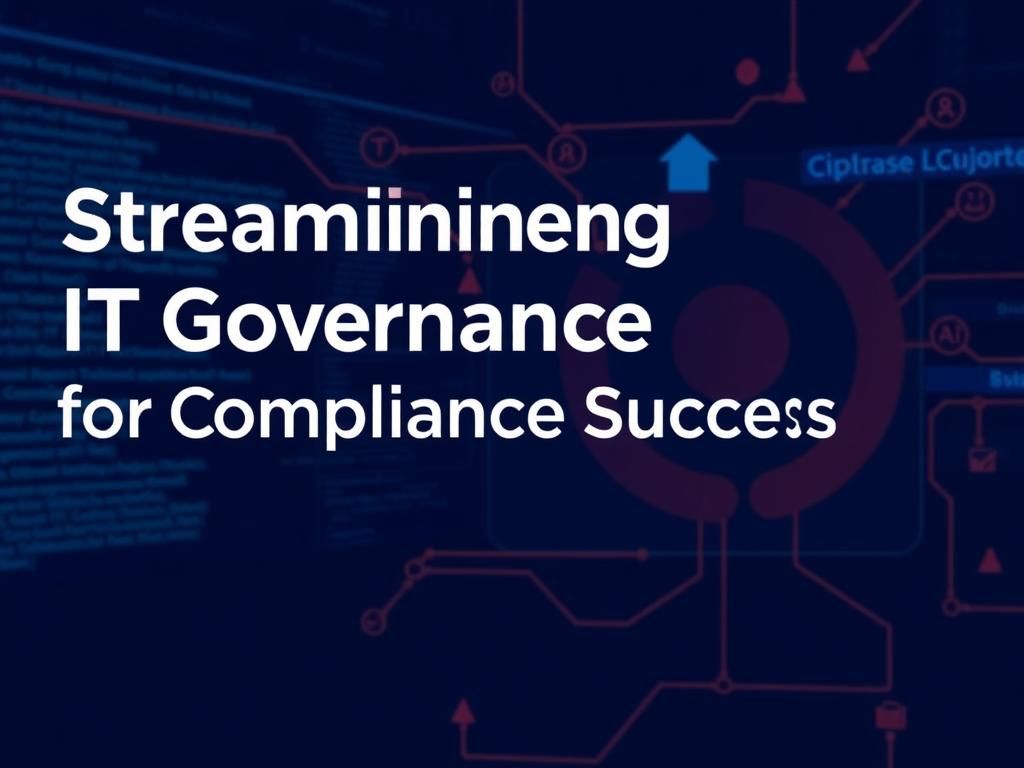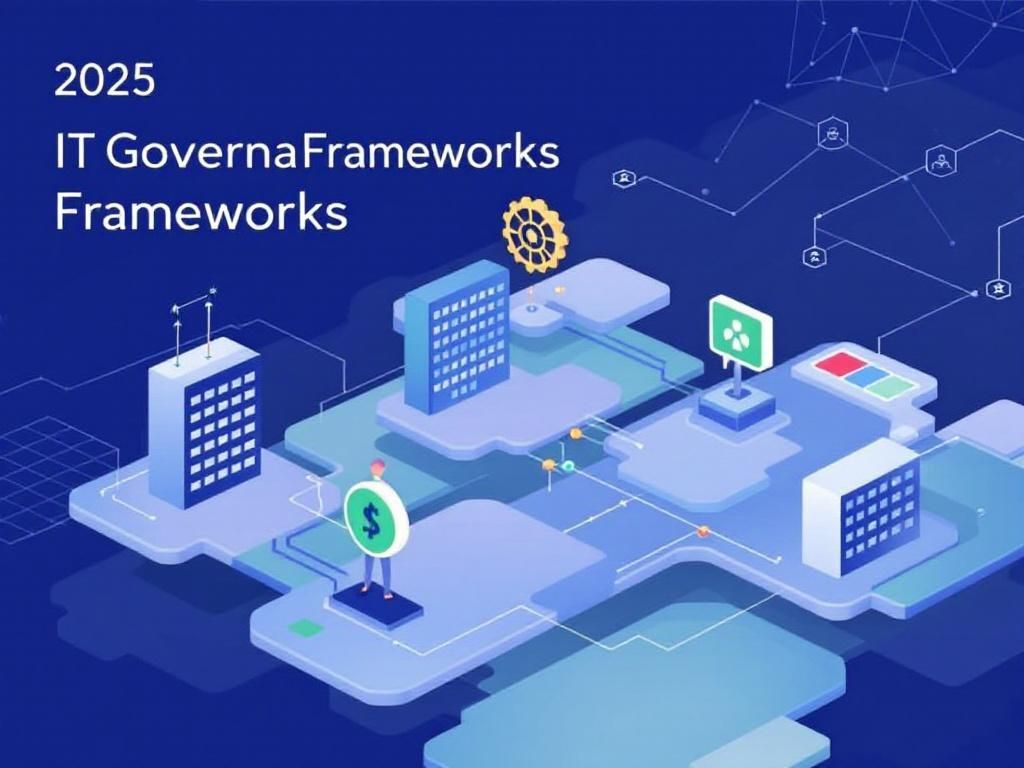2025’s Best IT Governance Frameworks Explained
Discover the top IT governance frameworks for 2025, their benefits, and how to implement them effectively to enhance your organization's IT strategy.

As organizations continue to navigate the complexities of technology and its integration into business processes, the need for robust IT governance frameworks becomes increasingly vital. These frameworks provide structured approaches to ensure that IT investments support business goals, manage risks, and comply with regulations. In this article, we will explore the leading IT governance frameworks of 2025, detailing their features, benefits, and suitability for different organizational needs.
Table of Contents
Understanding IT Governance
IT governance is a subset of corporate governance focused on the management and control of IT systems and resources. It involves aligning IT strategy with business strategy, ensuring that IT investments yield value, and managing risks associated with IT. Effective IT governance helps organizations achieve their goals, drive innovation, and improve operational efficiency.
Key IT Governance Frameworks of 2025
Several frameworks have emerged as industry standards, each with unique attributes designed to cater to different organizational requirements. Below, we delve into some of the leading IT governance frameworks in 2025.
1. COBIT
COBIT (Control Objectives for Information and Related Technologies) is a comprehensive framework developed by ISACA. It provides a structure for developing, implementing, monitoring, and improving IT governance and management practices.
Features:
- Aligns IT goals with business objectives
- Provides a set of tools, resources, and best practices
- Includes a maturity model for assessing governance capabilities
Benefits:
- Enhances risk management and compliance
- Improves interoperability of IT systems
- Facilitates better decision-making
2. ITIL
ITIL (Information Technology Infrastructure Library) focuses on aligning IT services with the needs of the business. While it is primarily a service management framework, ITIL also plays a significant role in governance.
Features:
- Emphasizes continual service improvement
- Offers best practices for service lifecycle management
- Incorporates a holistic approach to service delivery
Benefits:
- Enhances customer satisfaction through improved service quality
- Increases efficiency and reduces costs
- Provides a clear framework for managing change
3. ISO/IEC 38500
ISO/IEC 38500 is an international standard for the corporate governance of IT. It provides a framework for the effective governance of IT by helping organizations understand the role of their boards in governing IT.
Features:
- Focuses on the responsibilities of the board of directors
- Offers principles and guidelines for governance
- Emphasizes stakeholder involvement
Benefits:
- Promotes accountability in IT governance
- Encourages risk-aware decision-making
- Enhances transparency and trust
4. NIST Cybersecurity Framework
The NIST Cybersecurity Framework provides a policy framework of computer security guidance for how private sector organizations can assess and improve their ability to prevent, detect, and respond to cyber attacks.
Features:
- Composed of five core functions: Identify, Protect, Detect, Respond, and Recover
- Flexible and adaptable to various sectors
- Aligns with global standards and best practices
Benefits:
- Enhances cybersecurity posture
- Facilitates better risk management strategies
- Supports compliance with regulatory requirements
5. TOGAF
TOGAF (The Open Group Architecture Framework) is a framework for enterprise architecture that provides a systematic approach to design, plan, implement, and govern an enterprise information architecture.
Features:
- Structured methodology for architecture development
- Comprehensive tools and techniques for enterprise architecture
- Promotes stakeholder engagement and communication
Benefits:
- Improves alignment between IT and business strategy
- Reduces costs through better architecture governance
- Facilitates IT transformation and modernization
Choosing the Right Framework for Your Organization
Selecting the appropriate IT governance framework requires an understanding of your organization’s unique needs, culture, and goals. Below are some considerations to help guide your decision:
- Assess Organizational Maturity: Identify your organization’s current governance maturity level and choose a framework that aligns with it.
- Define Business Objectives: Ensure that the chosen framework supports the strategic objectives of the organization.
- Involve Stakeholders: Engage key stakeholders from various departments to ensure buy-in and facilitate effective implementation.
- Evaluate Flexibility: Look for frameworks that are adaptable to changes in the business environment and technology landscape.
Implementation Strategies
Once a framework has been selected, effective implementation is crucial for success. Here are some strategies organizations can adopt:
1. Establish a Governance Structure
Create a governance team that includes representatives from IT, compliance, legal, and business units to oversee implementation and adherence to the framework.
2. Develop a Roadmap
Create a detailed roadmap outlining implementation phases, responsibilities, and timelines to ensure structured progress towards governance goals.
3. Provide Training and Resources
Invest in training programs to educate employees about the framework and its importance, as well as providing necessary resources to support implementation.
4. Monitor and Review
Regularly assess the effectiveness of the governance framework and make adjustments as needed to respond to evolving challenges and opportunities.
Conclusion
The landscape of IT governance is continually evolving, and adopting the right framework is essential for organizations to thrive in a digital world. By understanding the strengths and characteristics of each framework, companies can make informed decisions that align IT governance with their overarching business strategies. Embracing these frameworks not only mitigates risks but also fosters innovation, efficiency, and a competitive edge in the rapidly changing technological environment.
FAQ
What are the best IT governance frameworks for 2025?
The best IT governance frameworks for 2025 include COBIT 2019, ITIL 4, ISO/IEC 38500, and the NIST Cybersecurity Framework, which offer comprehensive guidelines for managing and optimizing IT resources.
How does COBIT 2019 improve IT governance?
COBIT 2019 enhances IT governance by providing a flexible framework that aligns IT goals with business objectives, enabling organizations to manage risk and ensure compliance effectively.
Why is ITIL 4 important for governance in 2025?
ITIL 4 is important for governance in 2025 because it emphasizes value co-creation and integrates IT service management with organizational strategy, making it essential for modern IT governance.
What role does ISO/IEC 38500 play in IT governance?
ISO/IEC 38500 provides a high-level framework for the governance of IT, offering principles that help organizations ensure effective and efficient use of IT in achieving their goals.
How can organizations implement the NIST Cybersecurity Framework?
Organizations can implement the NIST Cybersecurity Framework by assessing their current cybersecurity posture, identifying gaps, and applying the framework’s guidelines to enhance their security measures.
What trends should organizations watch for in IT governance frameworks by 2025?
Organizations should watch for trends such as increased emphasis on cybersecurity, integration of AI and automation in governance processes, and a focus on sustainability and ethical considerations in IT decisions.








